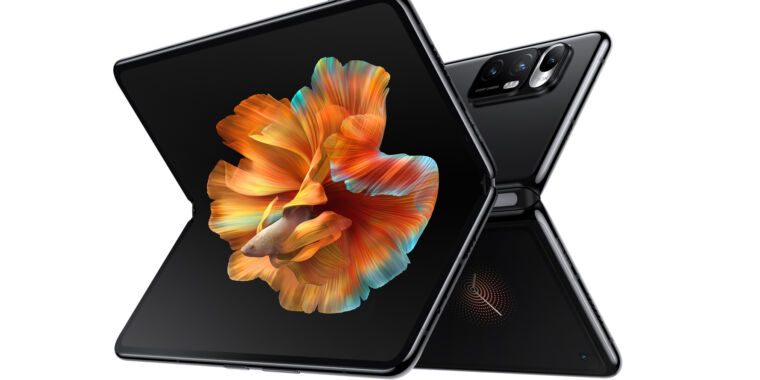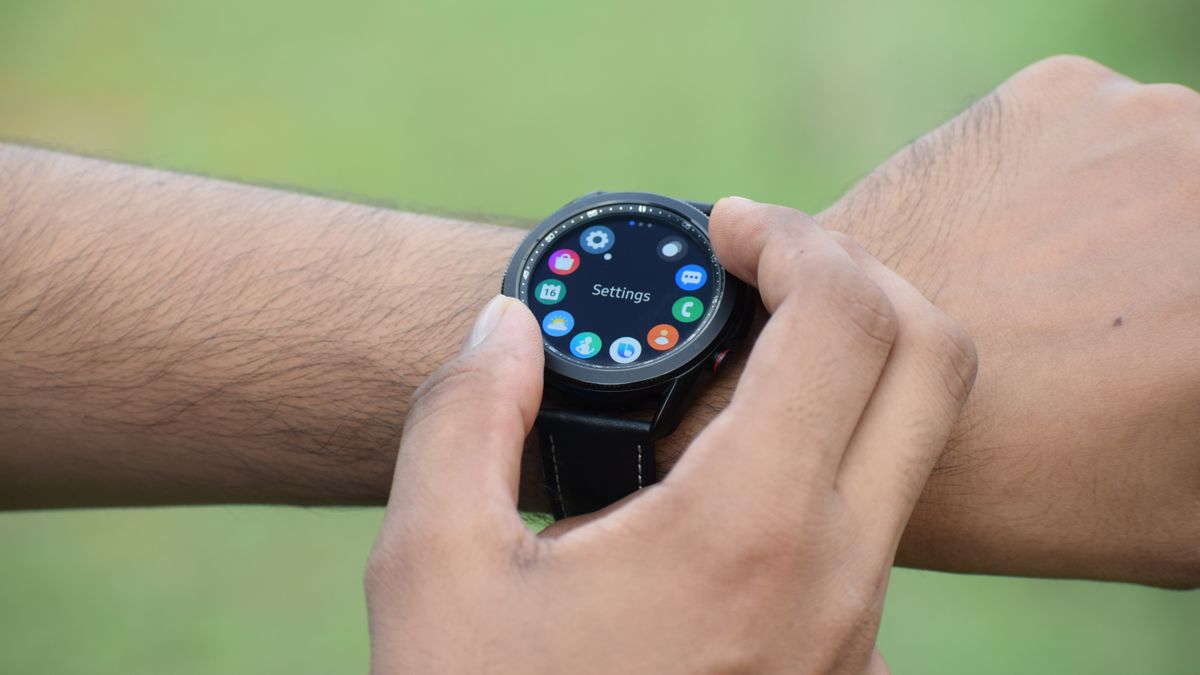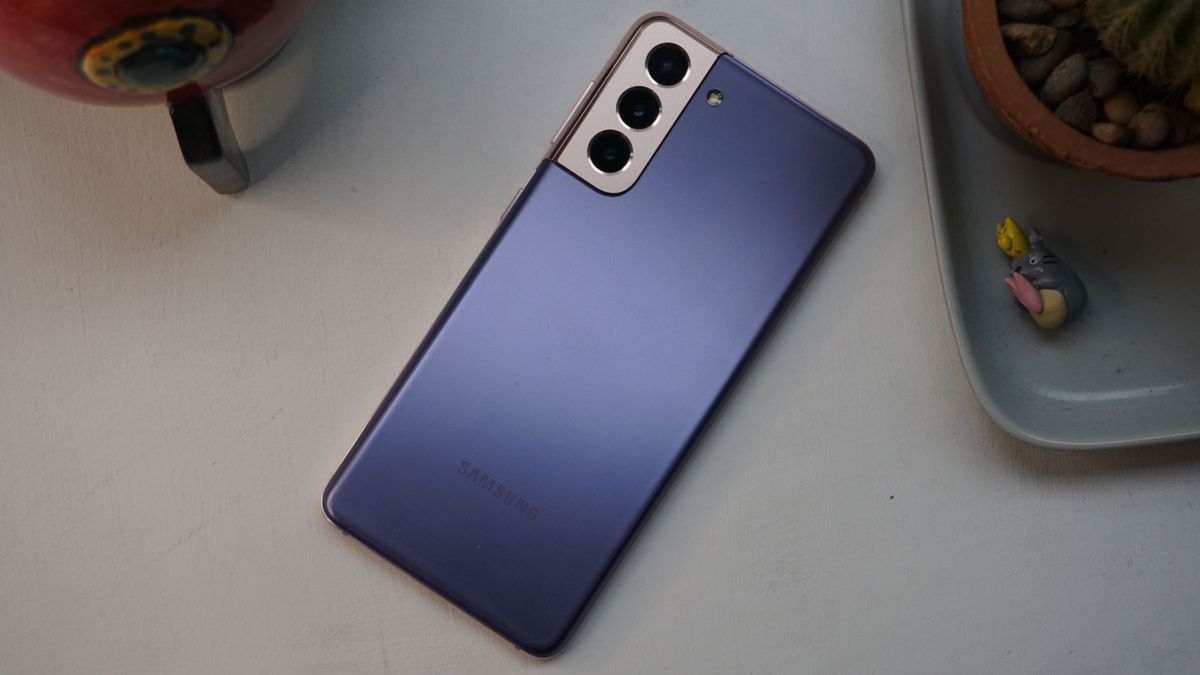
-
The Xiaomi Mi Mix Fold, which looks a lot like Samsung's foldables.
-
-
The inside 4:3 display.
-
The front display is tall and skinny.
-
The sizable camera bump.
Xiaomi is resurrecting the Mi Mix model line with the Mi Mix Fold. The first Mi Mix was a futuristic-looking smartphone that kicked off the slim-bezel smartphone race. This new Mi Mix Fold is Xiaomi's first commercial foldable, and, like Huawei's efforts, represents the company doing its best to just copy the Samsung Galaxy Fold design.
Just like Huawei's clone, the Xiaomi Fold is a bit bigger than Samsung's 7.6-inch device and sports a 60 Hz, 2480x1860, 8.01-inch internal flexible OLED display. The outside display on Xiaomi's Fold is a 90 Hz, 2520x840, 6.5-inch OLED display, which is bigger than Samsung's 6.2-inch display and Huawei's 6.45-inch outer display. Interestingly, Xiaomi is taking the opposite approach to screen refresh rates that Samsung is taking. On the Z Fold 2, a fast 120 Hz display is the interior tablet screen on the device, while the phone-style screen is 60 Hz. Xiaomi made the big inside screen slow and the outside screen fast.
Xiaomi has settled on an iPad-like 4:3 aspect ratio for the inside screen, while Samsung switched from nearly 4:3 in the first generation (4.2:3) to a taller 5:4 aspect ratio in its second-generation foldable. Huawei landed around this 5:4 aspect ratio for its foldable, too. It's hard to know what the right screen dimensions are for an Android foldable, since Android tablets have been dead for so long that there's really no app support anymore. Today, most Android apps are phone apps, and they really struggle to adapt to bigger displays. Samsung's and Huawei's ~5:4 displays are nearly two regular 21:9 Android phones placed next to each other, so they can sidestep this issue by just running in split-screen most of the time. The 4:3 aspect ratio of the Galaxy Fold 1 was a bit too cramped for split-screen.
One of the things Xiaomi and every other vendor can't match is Samsung's foldable glass display. Devices like the Galaxy Z Flip and Z Fold 2 actually have an "ultra-thin" layer of glass in the display. It's not the top layer (that's still easily scratchable plastic) but it gives some much-needed rigidity to a flexible display, which otherwise can be a rippled, squishy, light-distorting mess. Xiaomi doesn't have any actual pictures of the device, just renders, which all pitch the inner display as perfectly flat. In real life, expect ripples in the display and a big crease in the display where it folds in half.
High-end smartphone parts make up the rest of the internals. The phone has a Snapdragon 888 SoC, 12GB of RAM, 256GB of storage, 67 W wired charging, and a 5020 mAh battery. Xiaomi notes there are four speakers and a side fingerprint scanner. Disappointingly, Xiaomi is shipping the phone with Android 10 instead of the latest version, Android 11.
The camera features the debut of "Liquid Lens technology" in a smartphone. One of the camera lenses is literally a drop of oil instead of a glass lens, and by applying a voltage to it, you can change the shape and focal length of the lens. Liquid lenses are not a new idea—they show up in things like industrial barcode scanners—but they're new for a phone. Xiaomi says the lens allows one camera to cover two functions: the 8 MP sensor is both a 3x optical zoom and has a minimum focus distance of 3 cm for macro photos.
Your liquid lens needs to not freeze in low temperatures, but Xiaomi says you'll be good for a low of -40°C (-40°F) to a high of 60°C (140°F). The rest of your smartphone will probably stop working before the lens does in temperatures like that. There's also a 108 MP primary sensor and a 13 MP ultra-wide on the back.
The Xiaomi Mi Mix Fold ships in China, (only, for now) on April 16 and starts at CNY 9,999, or ~$1,526.
The Link LonkApril 01, 2021 at 12:00AM
https://ift.tt/3cB3jua
Xiaomi’s first foldable features a liquid camera lens, Samsung-style design - Ars Technica
https://ift.tt/31VSHRH
Samsung














